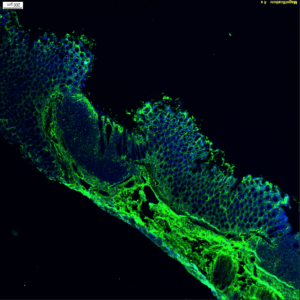Tuckman’s theory of small team development.
Bruce Tuckman has developed a theory, now widely adopted, of the different stages of small team development. His model identifies four stages being forming, storming, norming and performing. During the forming stage, the group members define the task to be accomplished, get to know each other and their leader, and start defining rules. The storming phase is characterized by arising conflicts and polarization between team members who are becoming emotional. Next, the norming stage comes with the resolution of the later conflicts, and the formation of cohesion in the work team. Finally, the group will be performing. During that stage, the roles within the team are well distributed, problems can be solved easily and each group member is entirely focused on the task to be accomplished. From a leadership standpoint, this theory brings a way for the team leader to predict the dynamics in the group and facilitate the transition from one stage to the next.

Hersey’s and Blanchard’s (1993) situational leadership theory.
According to Hersey and Blanchard, the leadership style should be flexible and adaptable to each unique leadership context and situation. To do so, the tasks at hand and the team members accomplishing this task, should be both considered when the leader decides which leadership style or approach would be the more appropriate, the more efficient. A good leader should understand to which extend they should communicate to the team about the task that are to be done, about how and when they should be accomplished as well. A good leader should also understand which relationship to adopt with the team members -if it should be more unidirectional or multidirectional and open. Based on all these facts, Hersey and Blanchard characterized four different possible leadership styles they named directing, coaching, supporting and delegating. A good leader should be aware of those and use them accordingly.

Kouzes’ and Posner’s leadership five practices.
In their paper, Kouzes and Posner try to determine what makes a leader, a great leader. It is no easy task, but with their experience, they were able to identify some key points. First of, a good leader should have the capacity to look ahead, to envision a future. As I mentioned on some of my other pages, I would agree that making sure, as a leader, that team members are inspired by a shared goal should be a priority. Kouzes and Posner also show that it is crucial to be able to look back and towards the future while recognizing people and context changes. I believe as a leader, it is important to have adaptability and the capacity to change and accept change in the present when looking back or to the future. A good leader should be able to learn from any failure and challenge the process to help positive change to arise. Another key point that is mentioned in Kouzes ‘and Posner’s paper is honesty, and being our ideal self as a leader in order to model the way. In the leadership five practices, enable others to act has also been characterized as a key concept to take into account. Since interdisciplinary biomedical sciences advances are a team effort, collaboration and trust within teams should be fostered by the leader. Finally, I believe that a good leader should provide guidance and encourage its team members so that they feel appreciated for their participation and understand their commitment is important.
